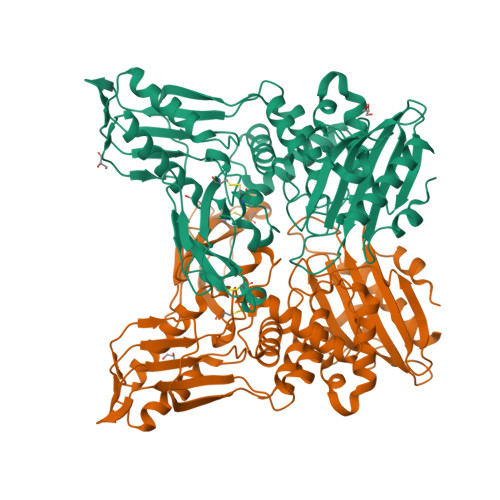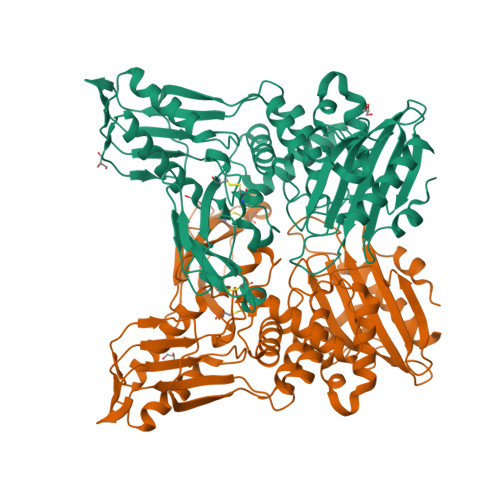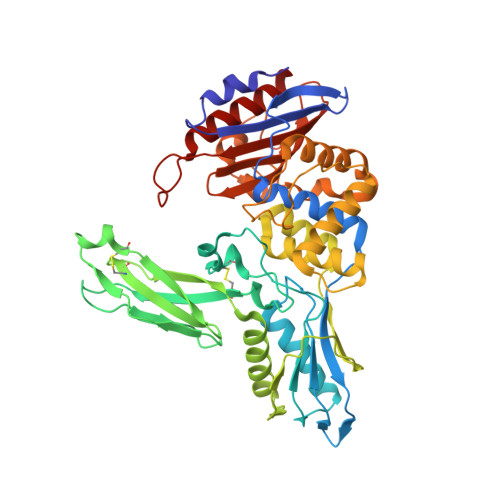Crystal structures of penicillin-binding proteins 4 and 5 from Haemophilus influenzae
Kawai, F., Clarke, T.B., Roper, D.I., Han, G.-J., Hwang, K.Y., Unzai, S., Obayashi, E., Park, S.-Y., Tame, J.R.H.(2010) J Mol Biol 396: 634-645
- PubMed: 19958776
- DOI: https://doi.org/10.1016/j.jmb.2009.11.055
- Primary Citation of Related Structures:
3A3D, 3A3E, 3A3F, 3A3I, 3A3J - PubMed Abstract:
We have determined high-resolution apo crystal structures of two low molecular weight penicillin-binding proteins (PBPs), PBP4 and PBP5, from Haemophilus influenzae, one of the most frequently found pathogens in the upper respiratory tract of children. Novel beta-lactams with notable antimicrobial activity have been designed, and crystal structures of PBP4 complexed with ampicillin and two of the novel molecules have also been determined. Comparing the apo form with those of the complexes, we find that the drugs disturb the PBP4 structure and weaken X-ray diffraction, to very different extents. PBP4 has recently been shown to act as a sensor of the presence of penicillins in Pseudomonas aeruginosa, and our models offer a clue to the structural basis for this effect. Covalently attached penicillins press against a phenylalanine residue near the active site and disturb the deacylation step. The ready inhibition of PBP4 by beta-lactams compared to PBP5 also appears to be related to the weaker interactions holding key residues in a catalytically competent position.
Organizational Affiliation:
Yokohama City University, Suehiro 1-7-29, Tsurumi, Yokohama 230-0045, Japan.

















